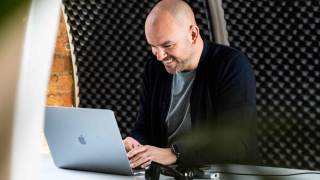
Heritage is a beautiful thing – it’s wrapped up in history and tradition, and can be a source of great pride, as well as acting as an important anchor to the past and holding a vision for the future. But it can also be a heavy weight. A hinderance to cultural progress. Values may be out-of-step with modern expectations, or misaligned completely.
In the brand world, these opposing poles can be witnessed. On the one hand, a rich heritage can keep a heralded or innovative brand elevated – informing a blueprint for its longevity. But on the other, heritage can have a blinker-effect. If too much of a brand’s focus is on the past, there’s a danger it might not survive the present.
In the world of higher education, heritage has long played an important role. A university’s ‘brand’ has enormous equity, and heritage feeds into brand perceptions whether we like it or not.
The heritage problem
Oxford and Cambridge are seen as the most prestigious universities in the UK, and heritage has always been central to their brands. These ‘elite’ institutions have both flourished thanks to their heritage, but they’ve also fallen victim of it too.
The delicate balance between brand and heritage can be witnessed in two examples…
One
The Rhodes Must Fall campaign that began in South Africa in 2015, sparked an interesting debate. In a nutshell, a statue of an imperial colonialist, Cecil Rhodes, was taken down at the University of Cape Town, owing to protests stemming from wider issues of racism in the education system. The campaign reached Oxford Oriel College a couple of years later, calling into question controversial aspects of the university’s history. It begged the question: How must universities handle sensitive aspects of their heritage without damaging brand equity?
Two
In response to mounting discontent over educational inequality, and to address its poor inclusivity record, the University of Cambridge partnered with Stormzy to offer scholarships to black students in the UK.
The two examples above are striking examples of how society and cultural shifts can adversely affect a brand’s equity, and the Cambridge example shows how a brand can adapt and make positive steps towards not only acknowledging cultural shortfalls, but showing the desire to mend them.
A brand strategy
Many of the UK’s universities are centuries old, but even the ones founded in the 20th century have built strong heritages. And more modern establishments are building their own stories and making their own histories. So heritage is a conundrum that isn’t going away.
Understanding how to harness the joyful parts of your history and manage the more sensitive moments is important. And feeding that back into your brand strategy can go a long way towards future-proofing your brand in a modern world.
Having a clear vision on these two elements will help you navigate that delicate balance between brand and heritage:
What parts of the university’s heritage should be celebrated
We recently worked with the Kings College London’s students’ union on a welcome campaign. But there was a twist – KCLSU was celebrating its 150th birthday. Impressive in itself, but even more so when you consider KCLSU was the first students’ union to ever exist. It was pioneering.
Not only did KCLSU need to welcome a new intake of students, they wanted to celebrate every student that had come before. They took great pride in their history, and this needed to infiltrate the campaign, and filter through to the student experience.
So we delivered a campaign that did just that – it highlighted 150 years of heritage, while offering a modern nuance. The historic elements underpinned the message that students at this university were change-makers. Visionaries. Ambassadors. We wanted to rouse passion and empower a new generation to be part of the story.
We blended modern design aesthetics with assets from the past to celebrate the university’s students’ union. You can see how we tackled it here:
Knowing the strengths of your heritage and how to pitch them to a modern audience will only strengthen your brand. And there are so many universities in the UK navigating this tricky balance and building their brands in positive ways, while celebrating their heritage appropriately.
What parts of a university’s heritage are outdated, and how should they be addressed?
Acknowledging there is work to do is the easy bit – but addressing any outdated ideas can be tricky. As Oxford’s Oriel College discovered, people are empowered by their values and will stand up for them. So have a game plan.
It was a masterstroke by the University of Cambridge to address its inclusivity problem by teaming up with Stormzy, who has been using his platform as a musician to help tackle injustice and equalities for the black community.
-
Universities can benefit from taking an objective step back and reviewing their history through a modern lens. Understanding the past helps shape the future, and where outdated ideas or difficult moments in time can be identified and acknowledged appropriately, real progress can be made. Bold action can be taken to make amends, and empower a new generation to be part of real change.







